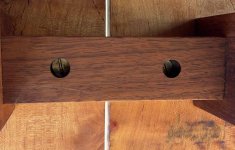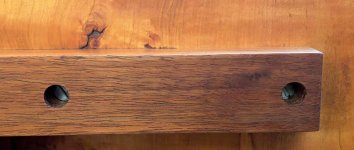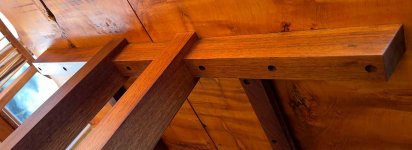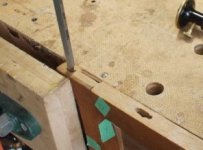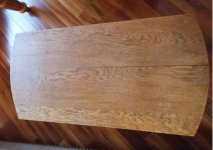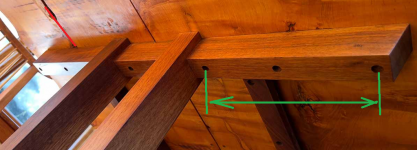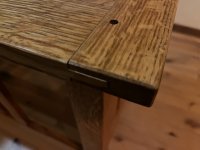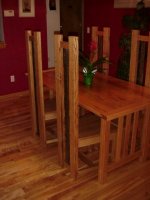smorgasbord
Member
- Joined
- Jan 7, 2022
- Messages
- 1,058
I'm lucky enough to have inherited my parents' dining room table, built by George Nakashima in 1972. It's a 2 piece bookmatched top, about 40" overall, with the "Frenchman's Cove" base. Here's the center underside:
[attachimg=1]
In the cross-member there's a screw near the center with no elongation. Note just a regular slotted screw, btw.
Here's the furthest from center support view:
[attachimg=2]
Here's kind of an overview of the underside:
[attachimg=3]
BTW, note that he used screws to pull the butterflies in:
[attachimg=4]
So, how is Nakashima accounting for wood movement of the wide top pieces with plain screws and no hole elongation?
[attachimg=1]
In the cross-member there's a screw near the center with no elongation. Note just a regular slotted screw, btw.
Here's the furthest from center support view:
[attachimg=2]
Here's kind of an overview of the underside:
[attachimg=3]
BTW, note that he used screws to pull the butterflies in:
[attachimg=4]
So, how is Nakashima accounting for wood movement of the wide top pieces with plain screws and no hole elongation?

